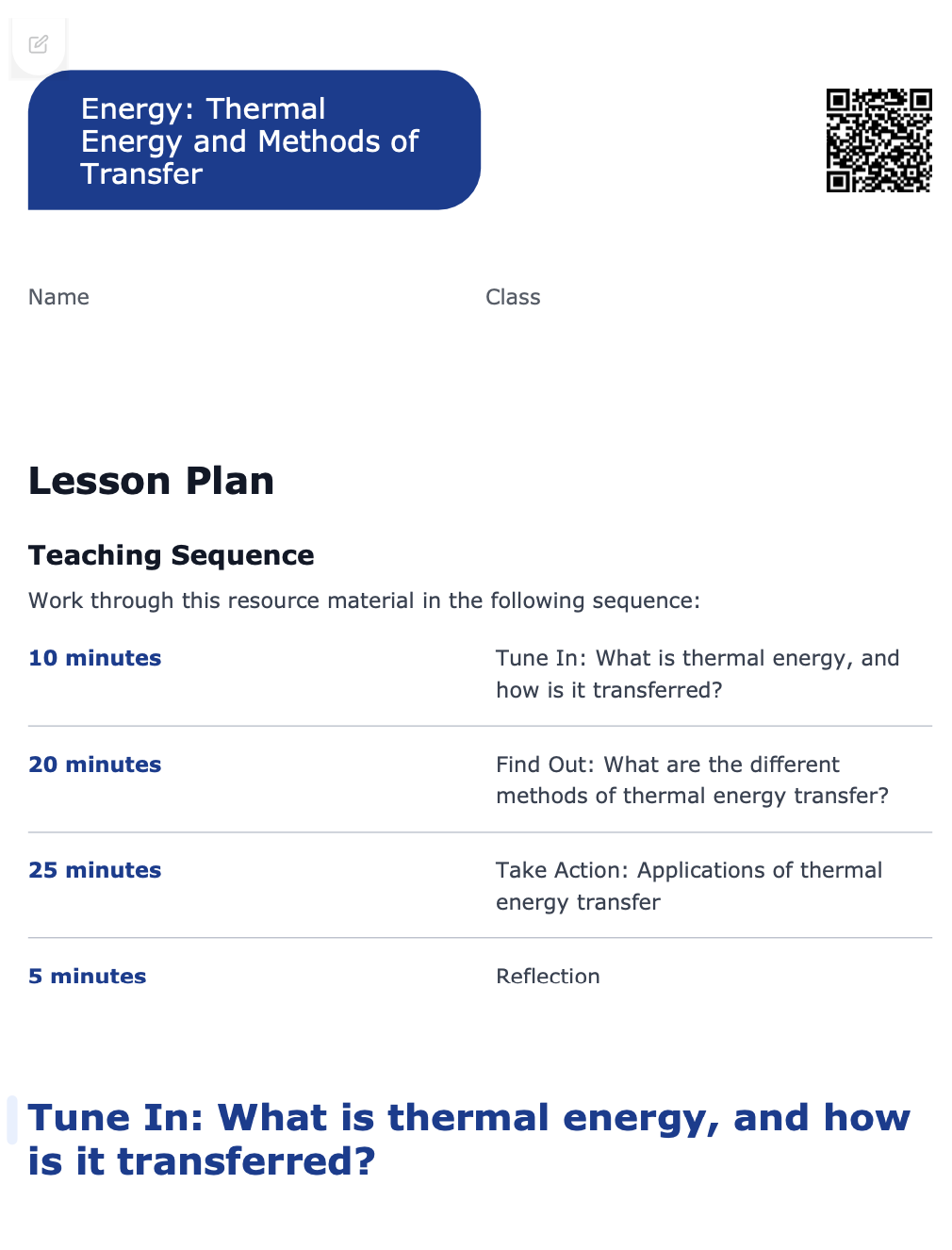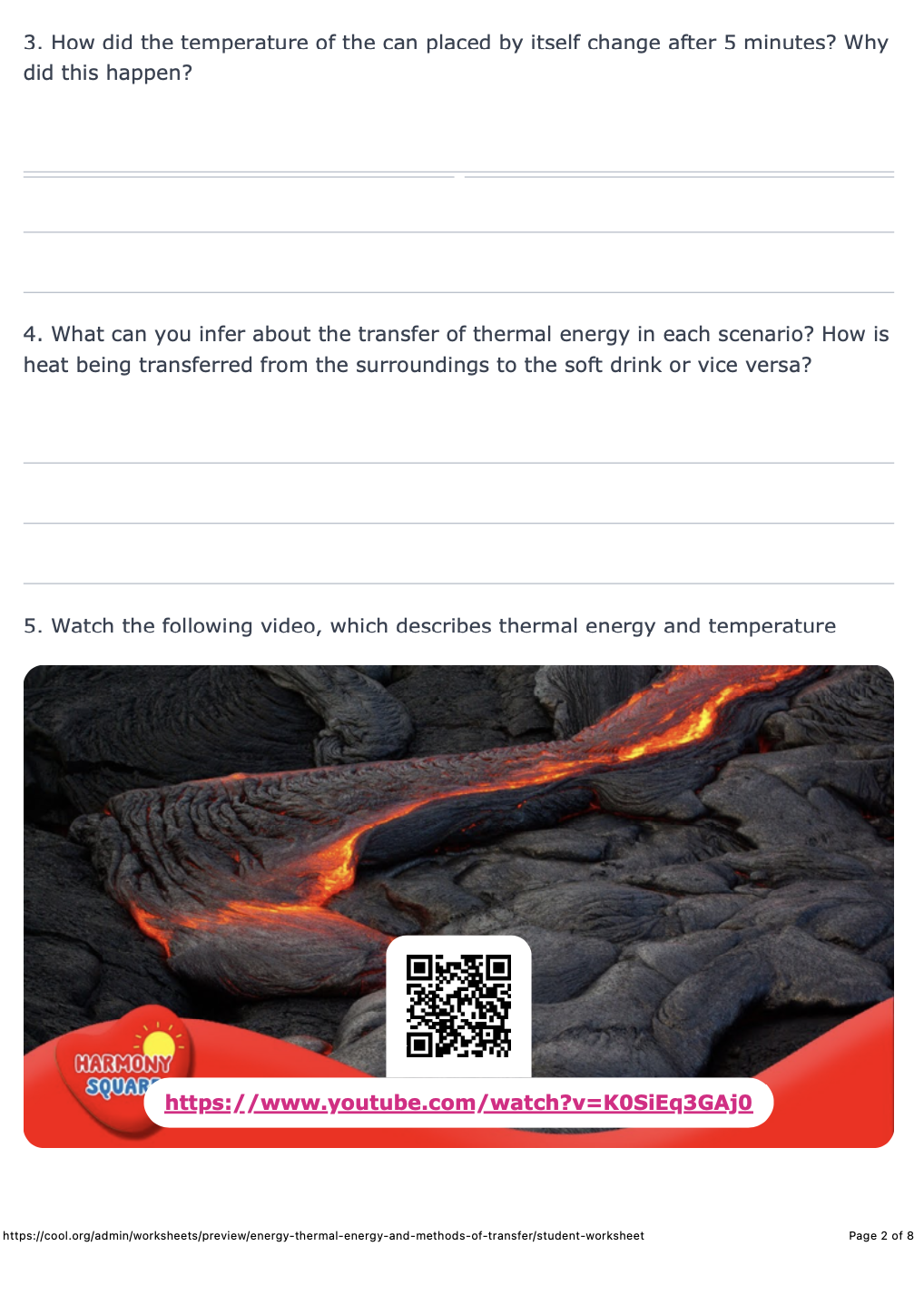Lesson summary
Students explore thermal energy and the way it is transferred through conduction, convection and radiation. They investigate each method and its significance in real-world applications before redesigning elements of their classroom for improved heat conservation.
Learning intentions:
Students will...
- understand the principles of thermal energy and the three methods of heat transfer - conduction, convection and radiation, as well as investigate the real world applications of these processes and how we can control them to conserve heat energy in the classroom.
Success criteria:
Students can...
- define thermal energy and describe the processes by which thermal energy is transferred
- summarise the differences in heat transfer of different materials
- explain some applications where conduction, convection and radiation are important to their operation.
Lesson guides and printables
Curriculum links
Select your curriculum from the options below.
Lesson details
Skills
This lesson is designed to build students’ competencies in the following skills:
- critical thinking
- collaboration
- communication
- global citizenship
- problem-solving
Curriculum Mapping
Australian Curriculum (v9.0) content description: Year 9 Physics
- Apply the law of conservation of energy to analyse system efficiency in terms of energy inputs, outputs, transfers and transformations AC9S9U05
- Use wave and particle models to describe energy transfer through different mediums and examine the usefulness of each model for explaining phenomena AC9S9U04
General capabilities: Critical and Creative Thinking, Personal and Social Capability
Syllabus outcomes: Stage 5: PW3
Cross-curriculum priority: Sustainability
Relevant parts of Year 9 Physics achievement standards: Students can analyse energy conservation in simple systems and apply wave and particle models to describe energy transfer and analyse the different ways in which science and society are interconnected.
UN Sustainable Development Goals
UN SDG 7: Affordable and clean energy
- 7.2 By 2030, increase substantially the share of renewable energy in the global energy mix.
- 7.3 By 2030, double the global rate of improvement in energy efficiency.
- 7.A By 2030, enhance international cooperation to facilitate access to clean energy research and technology, including renewable energy, energy efficiency and advanced and cleaner fossil-fuel technology, and promote investment in energy infrastructure and clean energy technology.
Resources Required
- Device capable of presenting audiovisual material
- Student devices for research
- 3 x soft drink cans
- 3 x thermometers
- 3 x plastic tubs
- Hot water
- Ice
Additional Info
This unit of lessons, along with the other units in the Skills and Jobs For a Transitioned Economy package, aims to teach students how to be climate solution entrepreneurs. These lessons will equip students with the relevant skills and knowledge of jobs and career pathways that will be able to sustain our economy once it has transitioned away from fossil fuels. Cool.org thanks our philanthropic partners, the Lord Mayor’s Charitable Foundation and Boundless Earth, for their generous contributions in helping us to create these resources.




Welcome back!
Don't have an account yet?
Log in with:
Create your free Cool.org account.
Many of our resources are free, with an option to upgrade to Cool+ for premium content.
Already have an account?
Sign up with:
By signing up you accept Cool.org's Terms and Conditions(Opens in new tab) and Privacy Policy(Opens in new tab).